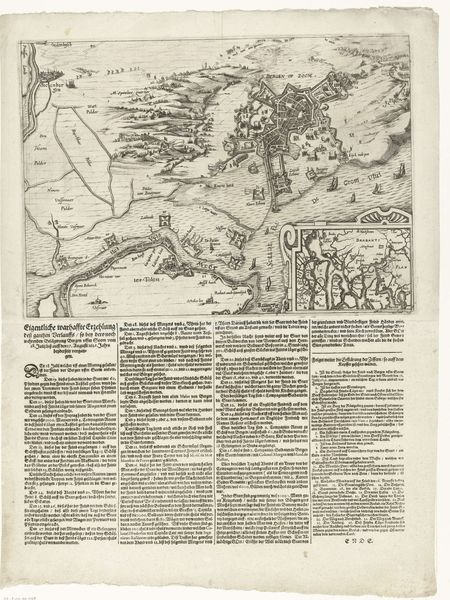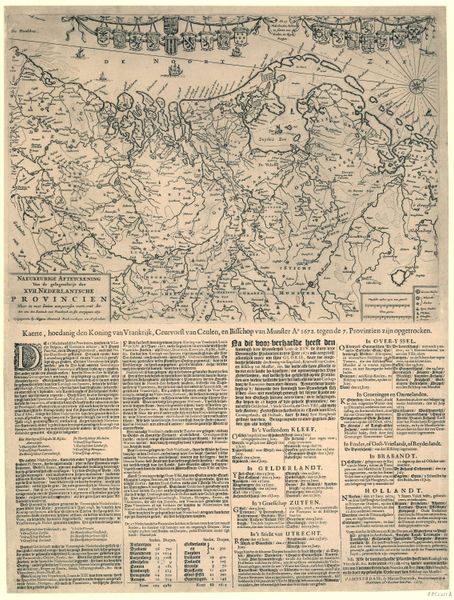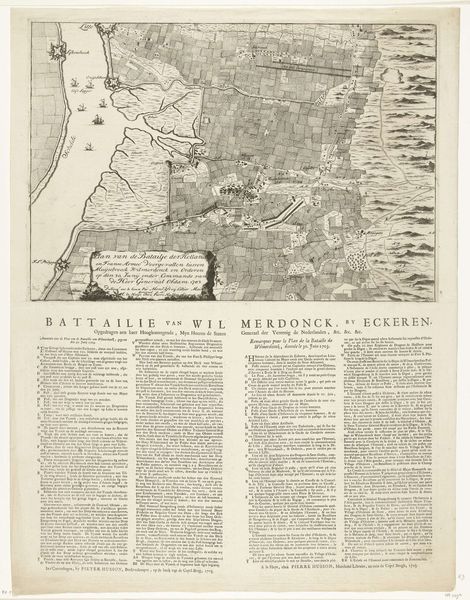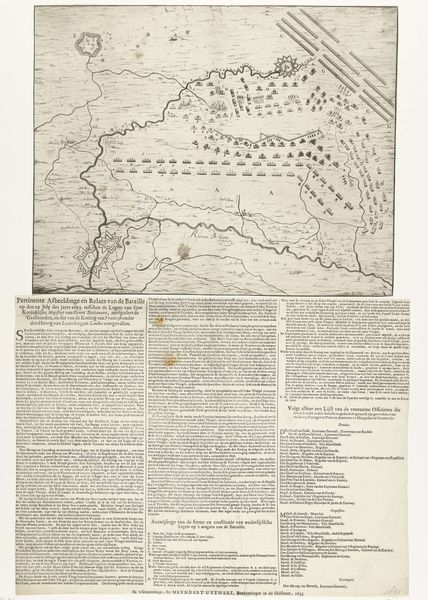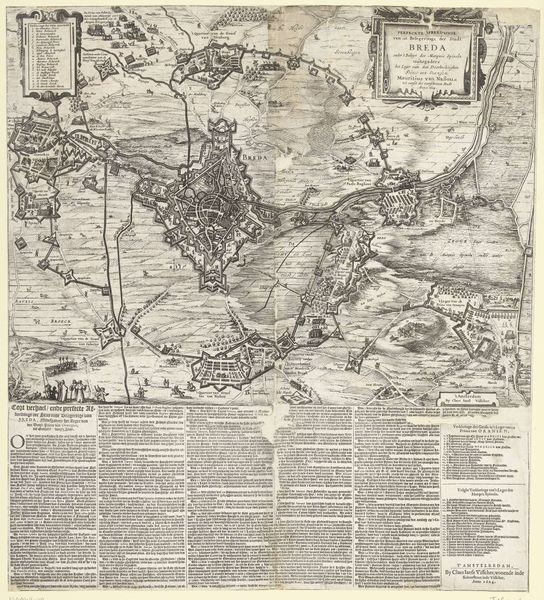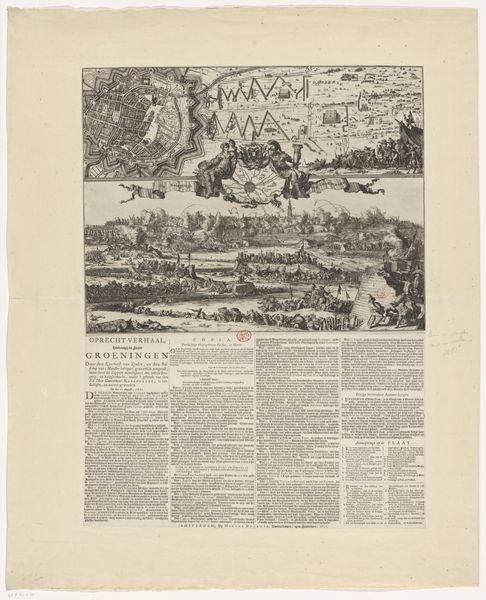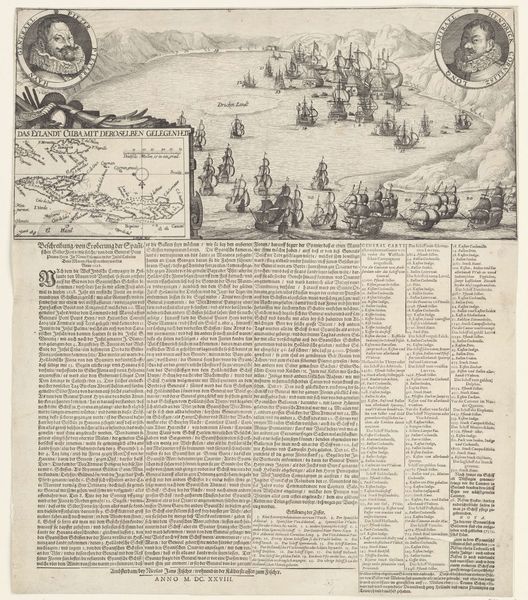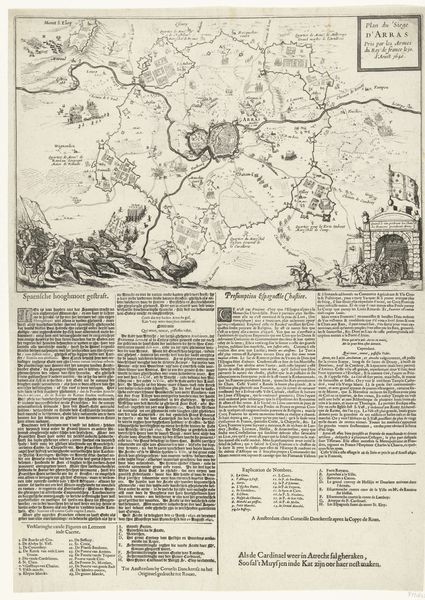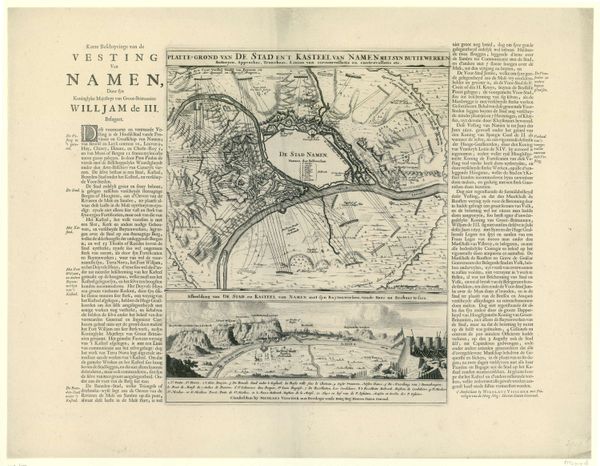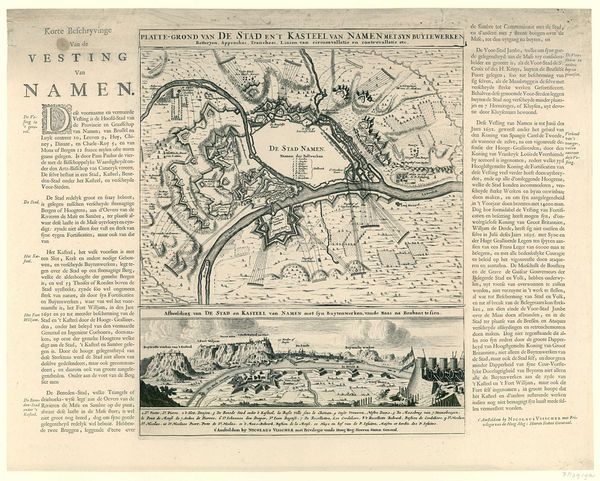
print, engraving
#
baroque
# print
#
geometric
#
history-painting
#
engraving
Dimensions: height 212 mm, width 353 mm, height 520 mm, width 400 mm
Copyright: Rijks Museum: Open Domain
Curator: Here we have "Kaart van de belegering van Ramillies," or "Map of the siege of Ramillies," a print from 1706, held in the Rijksmuseum's collection. It's unsigned, placing it in the anonymous sphere of production. What's your initial take on this, seeing it for the first time? Editor: My immediate impression is one of strategic coolness, almost clinical. The lines and forms create a sense of order and control, yet underlying this is an implied violence. The stark contrast hints at power dynamics. Curator: Indeed. The method of its production is an engraving, enabling a precise replication for distribution, primarily crafted to relay specifics regarding this battle. Considering printmaking as a distinctly replicable process, it lowers the barrier of access to such information for the emerging public sphere. It democratizes knowledge. Editor: Absolutely. Thinking about the socio-political context, it is clearly meant to construct a particular narrative about the battle, likely for propagandistic ends. Consider, too, the lack of an attributed author. The print serves the prevailing powers. This visual text, intertwined with war and its aftermath, surely impacts public sentiment regarding warfare itself and the sociopolitical circumstances that perpetuate it. Curator: It also raises important questions about the role of labor and production in shaping these kinds of images. Who engraved it? What were their skills? What economic circumstances defined that moment? Editor: That is a vital point. Furthermore, this map performs specific ideological work. In effect, it gives authority to those commanding the strategies and political structures of the moment. The engraving functions as a tool for defining geographic space through a colonial gaze, reasserting power through mapping as a controlling practice. Curator: Looking at its function then – informing and arguably influencing public opinion – illuminates the complicated relationship between labor, representation, and historical narrative. Editor: Right. By scrutinizing its creation and distribution, it is hard not to question its claims of impartial visual reporting, encouraging us to seek greater transparency in any such visual record, and perhaps in power relations too.
Comments
No comments
Be the first to comment and join the conversation on the ultimate creative platform.
